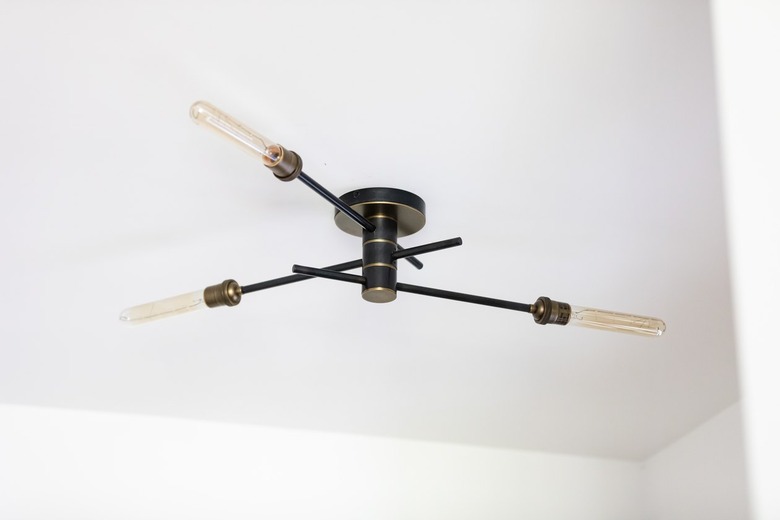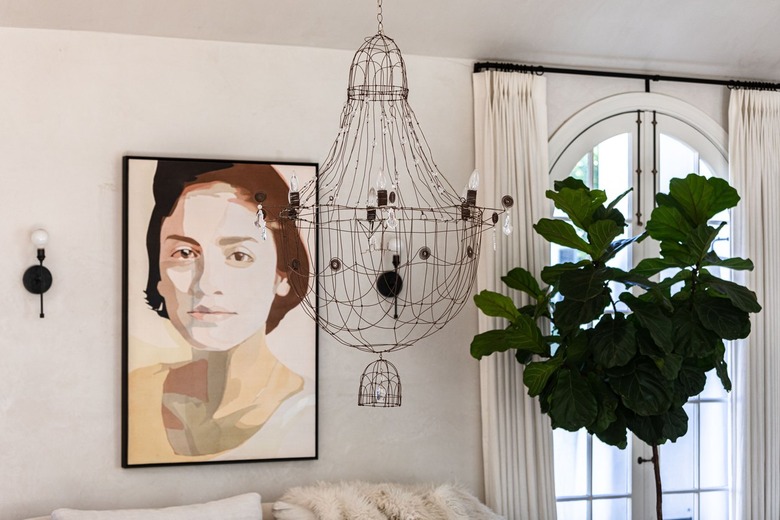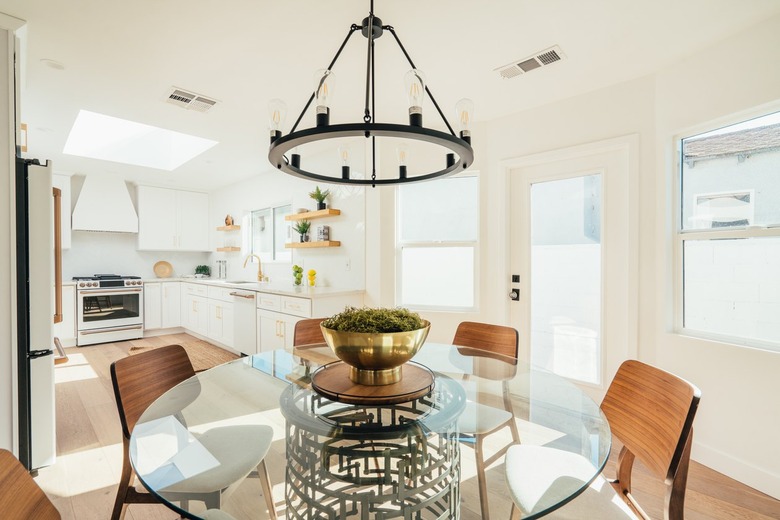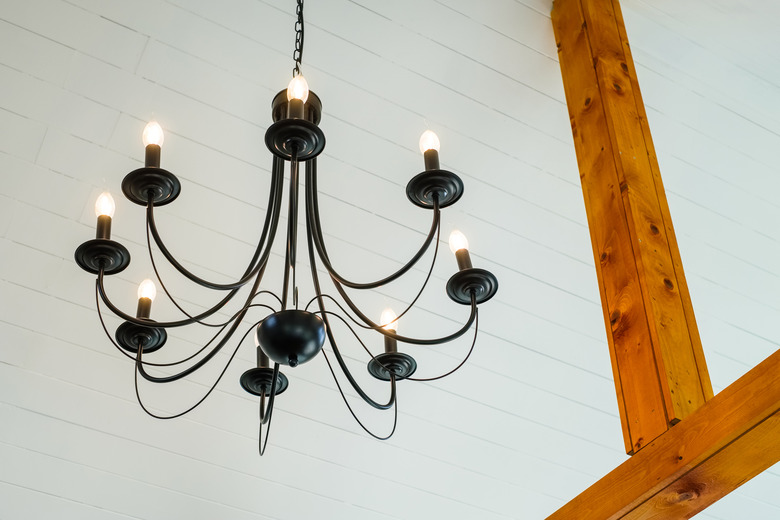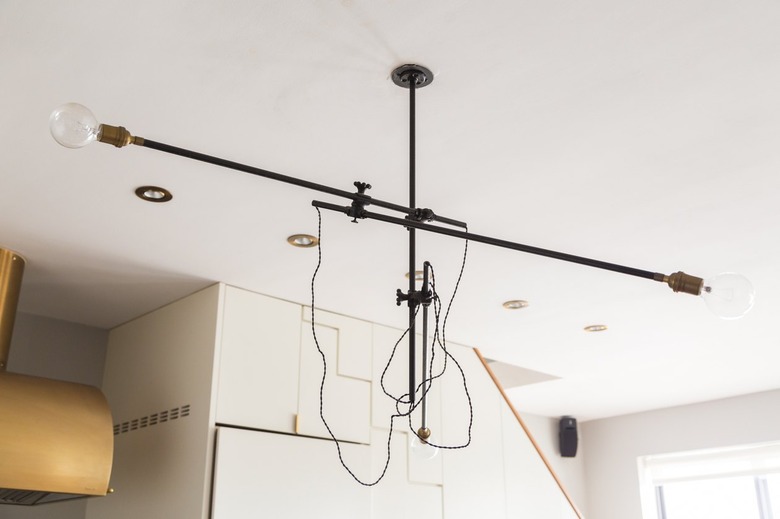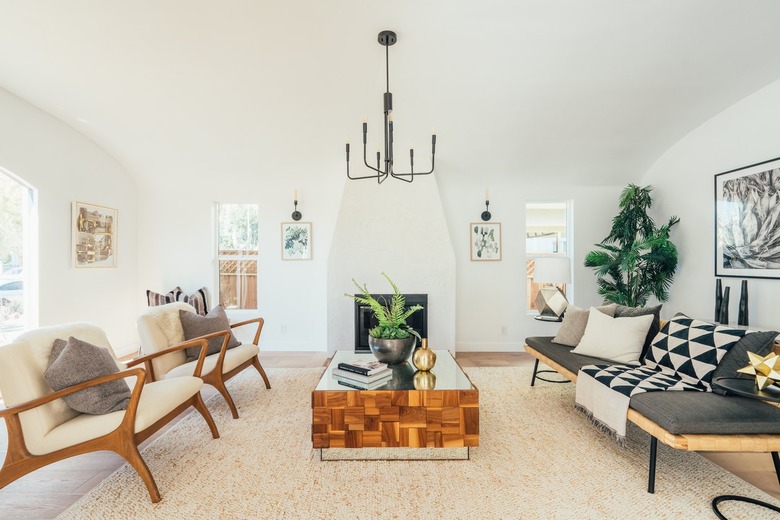Chandeliers: The Ultimate Buying Guide
We may receive a commission on purchases made from links.
When people relied on candlelight, chandeliers became popular because the hanging design allowed light to reach across an entire room while reducing the risk of fire. Crystal chandeliers were particularly valued since the polished crystal prisms reflected light, making candlelight brighter. Today, chandeliers don't typically use candles, but they remain an effective and attractive way to brighten up a room.
When considering adding a chandelier to your home, there are many factors to consider, including cost. Not only must a chandelier fit into your budget, it must also be the right size style to fit your space and existing interior design. These types of lights almost always require professional installation and a lot of upkeep, so factor that into your budget when you're shopping.
How Much Do Chandeliers Cost?
How Much Do Chandeliers Cost?
Chandeliers typically cost between $70 and $600, but pricing varies just as widely as the sizes, styles, and materials of the fixtures. A basic mini chandelier sized under 20 inches can be found for less than $70. On the other end of the spectrum, large, designer chandeliers can easily cost tens or even hundreds of thousands of dollars.
A good-quality, full-size, noncrystal chandelier costs between $150 and $600, with larger, more intricate designs on the higher end. Traditional chandeliers with real crystals can cost significantly more, typically thousands of dollars.
Types of Chandeliers
Types of Chandeliers
At their most basic, chandeliers are a type of hanging light. Since that definition is so broad, it only makes sense that there are so many different types of chandeliers, with some styles fitting into multiple categories. For example, many cage chandeliers are rounded, meaning they are also technically globe chandeliers.
There are five types of chandeliers: crystal, modern, rustic, beaded, and globe.
Crystal Chandeliers
When most people hear the word "chandelier," they envision crystal chandeliers. Crystal chandeliers may feature different shapes and sizes of crystals arranged in modern or classic designs (sometimes even featuring plastic candlesticks). The type of crystal will impact the price and its sparkle, with Swarovski crystals considered the highest-quality option and K5 or K9 Chinese crystals being the lowest quality available, but most consumers cannot tell the difference between different grades of crystal.
While crystal chandeliers look luxurious in the right room, they can look gaudy in more intimate settings, like bedrooms. They are most frequently found as tiered chandeliers, meaning they take up a lot of vertical space, especially waterfall, raindrop, or staircase designs.
Pros
- Good light source because crystals reflect light
- Make a dramatic first impression when used in an entryway
- Provide soft, romantic lighting
Cons
- Too flashy for some settings
- Take up a lot of space
- Can be difficult to clean
- Heavy
Modern Chandeliers
Most chandeliers tend to have a timeless historical appearance, but modern chandeliers look futuristic. They usually feature sleek styling and geometric shapes, like globe or caged chandeliers, but may incorporate organic elements, such as leaves, branches, or flowers. The more simple style of modern chandeliers means they are available in various sizes and shapes.
Pros
- Eye-catching
- Simple, geometric designs are less gaudy and more timeless than crystal chandeliers
Cons
- May clash with certain styles of room decor
- Geometric designs may look more industrial and less romantic than other styles
Rustic Chandeliers
In stark contrast to modern designs, rustic chandeliers use organic materials, textures, and shapes to create a warm, less formal look. They are typically made from metal, wood, antlers, horns, or resins painted to look like one of these materials. Naturally, these rough and rugged lights only work with certain decor styles, including country, cabin, shabby chic, rustic, craftsman, and farmhouse looks. Because they're usually designed for smaller, cozier rooms, they tend to be smaller in size.
Pros
- Create a warm, cozy atmosphere
- Available in smaller sizes
- Require less upkeep than more formal chandelier styles
- Can
be DIYed
Cons
- Only work with a handful of styles
- Antler chandeliers may upset some guests, even when synthetic
- Emit lower light levels since materials tend not to be opaque and nonreflective
Beaded Chandeliers
Beaded chandeliers have a similar appearance to crystal chandeliers but have a more casual vibe since the crystal prisms are replaced with beads made from materials such as glass, felt, wood, or shells. Because the beads tend to block or filter light, these chandeliers project interesting patterns or light and shadow, creating an exotic, mysterious atmosphere.
Pros
- Create an interesting atmosphere in rooms
- Suitable for intimate settings, such as bedrooms
- Can
be crafted at home
Cons
- Lighting may be too dark or inconsistent
- Don't work with many decor styles
Globe Chandeliers
As the name implies, globe chandeliers are round, like globes. The lights may be on the inside or outside of the globe, which can be made from metal, glass, crystal, or wood. Because the chandelier's round structure is the only defining factor, these lights can be designed to look elegant, modern, retro, or casual. The most famous of all globe chandeliers is the midcentury modern sputnik chandelier, which features numerous arms shooting out from the center.
Pros
- Designs available to match any decor
- Often have a timeless appearance
- Many artistic styles
Cons
- Hard to find in larger sizes
Chandelier Materials
Chandelier Materials
Many different materials are used in chandeliers, including metal, crystal, glass, wood, antler, resin, beads, and fabric. Unfortunately, because they are hanging lights that often feature intricate detailing, chandeliers are notoriously challenging to clean, and the more detailed and sizable, the more challenging the task will be. Generally speaking, rustic chandeliers need to be cleaned less frequently since their rough materials hide dust well. On the other hand, a dusty crystal will quickly lose its shine.
It's best to follow the cleaning instructions included with the lighting fixture, but generally speaking, this is how to clean a chandelier:
- Turn off the power
and then going over the metal pieces with a duster, clean rag, or vacuum to remove dust and spiderwebs. - To clean crystal or glass, use cotton gloves to
wipe away dust without leaving fingerprints and avoid using liquid, as it can
leave water marks. - For antlers, resin, or wood, start by dusting the materials and
then clean any remaining dust or dirt with a damp rag dipped in a solution of
warm water and mild soap. Then, remove any soap residue with a clean, wet rag.
What Size Chandelier Do You Need?
What Size Chandelier Do You Need?
Chandeliers come in various sizes, so before buying a chandelier, first determine what size you need. For open areas like a living room, foyer, or bedroom, the bottom of a chandelier should be at least 7 feet above the floor but preferably 8 to 9 feet above the floor. The width of the chandelier in inches should be equal to the sum of the length and width of a room in feet. For example, if you want 8 feet of clearance in a room with an 11-foot ceiling, you should get a chandelier that's 3 feet tall (including the downrod or chain length). If the room is 16 x 20 feet, the chandelier should be 36 inches wide.
Sizing is different for a dining room, where light fixtures should be centered above the table. A chandelier should hang 30 to 36 inches above the tabletop and have a diameter that's 1/2 to 2/3 of the table's length. As an example, a 48-inch-tall table should have a chandelier between 24 and 32 inches wide (48 x .5 and 48 x .66666).
How to Pick the Right Chandelier for Your Home
How to Pick the Right Chandelier for Your Home
When deciding on the right chandelier, first come up with a budget that includes the installation cost since this can add hundreds to the price of the light fixture. Beyond that, consider the best style and materials for your existing decor. Finally, calculate the right size before buying to avoid ending up with a comically oversized or undersized chandelier.
